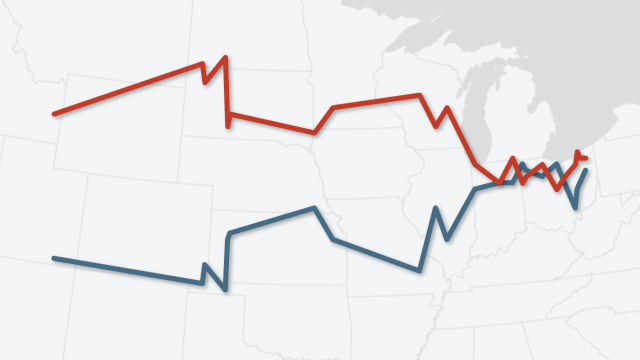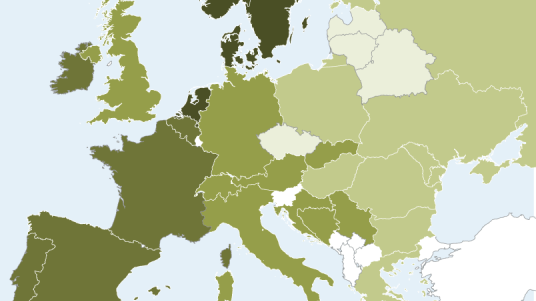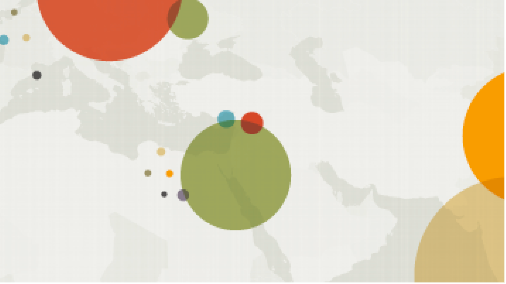

How Americans celebrate Thanksgiving
Around nine-in-ten Americans (91%) celebrate the holiday, including large majorities in all major demographic groups. Saying prayers and expressing gratitude are common at the Thanksgiving dinner table, but other traditions and activities vary – from watching sports or parades to charitable giving and holiday shopping.
Latest Publications
-
Public Narrowly Approves of Trump’s Plans; Most Are Skeptical He Will Unify the Country
Americans feel more “warmly” toward Trump today than after the 2020 or 2016 elections, and he draws broad confidence on the economy.
Most Popular
Election 2024

Trump and Harris Supporters Differ on Mass Deportations but Favor Border Security, High-Skilled Immigration
A majority of Trump backers say more immigrants would make life worse for people like them, while most Harris backers say life wouldn’t change.
Features
International Affairs

Turks Lean Negative on Erdoğan, Give National Government Mixed Ratings
55% of Turks have an unfavorable view of President Recep Tayyip Erdoğan, and about half lack confidence in the national government.

Slight uptick in Americans wanting U.S. to help diplomatically resolve Israel-Hamas war
In the year since Hamas attacked Israel, and Israel responded by invading Gaza, U.S. public opinion on the war shifted modestly.

About a third of UN member states have ever had a woman leader
Just 13 UN member countries are currently led by women; in 9 of those 13, the current leader is the country’s first woman head of government.

How Mexicans and Americans view each other and their governments’ handling of the border
Mexicans hold generally positive views of the United States, while Americans hold generally negative views of Mexico – a reversal from 2017.
News Media Trends

Americans’ top sources of political news ahead of the 2024 election
Among those who listed a main source of political news, six-in-ten say that their source is part of the “mainstream media.”

Republicans, young adults now nearly as likely to trust info from social media as from national news outlets
Today, 37% of all U.S. adults say they have a lot of or some trust in the information that comes from social media sites.

Who U.S. Adults Follow on TikTok
American TikTok users follow far more pop culture and entertainment accounts than news and politics ones.

Friends, family and neighbors are Americans’ most common source of local news
About three-quarters of Americans (73%) say they often or sometimes get local news from friends, family and neighbors.

More Americans – especially young adults – are regularly getting news on TikTok
The share of adults who say they regularly get news from TikTok has grown about fivefold since 2020, from 3% to 17% in 2024.
Race & Ethnicity

Most Hispanic Americans say increased representation would help attract more young Hispanics to STEM
Roughly seven-in-ten Hispanic adults (69%) say that having a Hispanic high school STEM teacher would make young Hispanic people more likely to pursue these degrees.

1 in 10 eligible voters in the U.S. are naturalized citizens
Naturalized citizens make up a record number of eligible voters in 2022, most of whom have lived here more than 20 years.

Latinx Awareness Has Doubled Among U.S. Hispanics Since 2019, but Only 4% Use It
Three-quarters of Hispanics who have heard of the term Latinx say it should not be used to describe the Hispanic or Latino population.
Our Methods

U.S. Surveys
Pew Research Center has deep roots in U.S. public opinion research. Launched as a project focused primarily on U.S. policy and politics in the early 1990s, the Center has grown over time to study a wide range of topics vital to explaining America to itself and to the world.

International Surveys
Pew Research Center regularly conducts public opinion surveys in countries outside the United States as part of its ongoing exploration of attitudes, values and behaviors around the globe.

Data Science
Pew Research Center’s Data Labs uses computational methods to complement and expand on the Center’s existing research agenda.

Demographic Research
Pew Research Center tracks social, demographic and economic trends, both domestically and internationally.

Decoded
Pew Research Center tracks social, demographic and economic trends, both domestically and internationally.
Our Experts
“A record 23 million Asian Americans trace their roots to more than 20 countries … and the U.S. Asian population is projected to reach 46 million by 2060.”

Neil G. Ruiz,
Head of New Research Initiatives
Methods 101 Videos

Methods 101: Random Sampling
The first video in Pew Research Center’s Methods 101 series helps explain random sampling – a concept that lies at the heart of all probability-based survey research – and why it’s important.
Signature Reports

Race and LGBTQ Issues in K-12 Schools
Representative Democracy Remains a Popular Ideal, but People Around the World Are Critical of How It’s Working
Americans’ Dismal Views of the Nation’s Politics
Measuring Religion in China
Diverse Cultures and Shared Experiences Shape Asian American Identities
Parenting in America Today
Editor’s Pick

About a third of UN member states have ever had a woman leader
How U.S. Public Opinion Has Changed in 20 Years of Our Surveys
What’s new with you? What Americans talk about with family and friends
Same-Sex Marriage Around the World
Is College Worth It?
Broad Public Support for Legal Abortion Persists 2 Years After Dobbs
Immigration & Migration

What the data says about immigrants in the U.S.
Most U.S. voters say immigrants – no matter their legal status – mostly take jobs citizens don’t want
Migrant encounters at U.S.-Mexico border have fallen sharply in 2024
The Religious Composition of the World’s Migrants
The Religious Composition of the World’s Migrants
© 2024 Pew Research Center



















